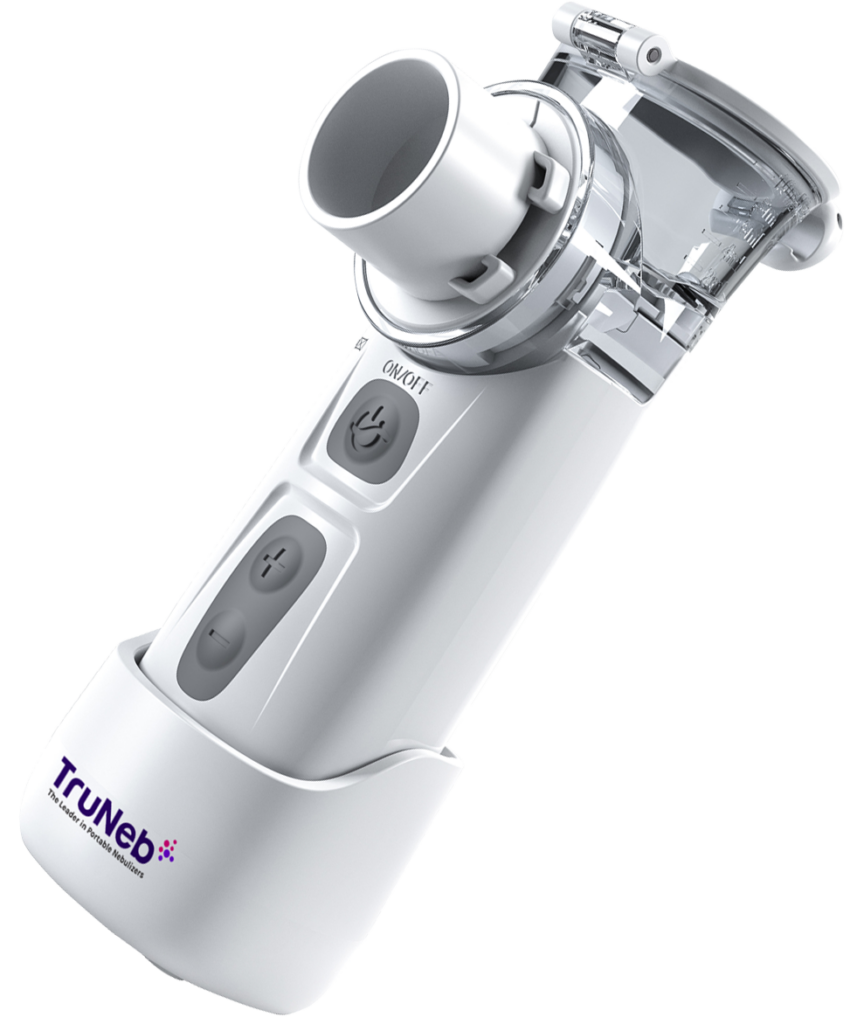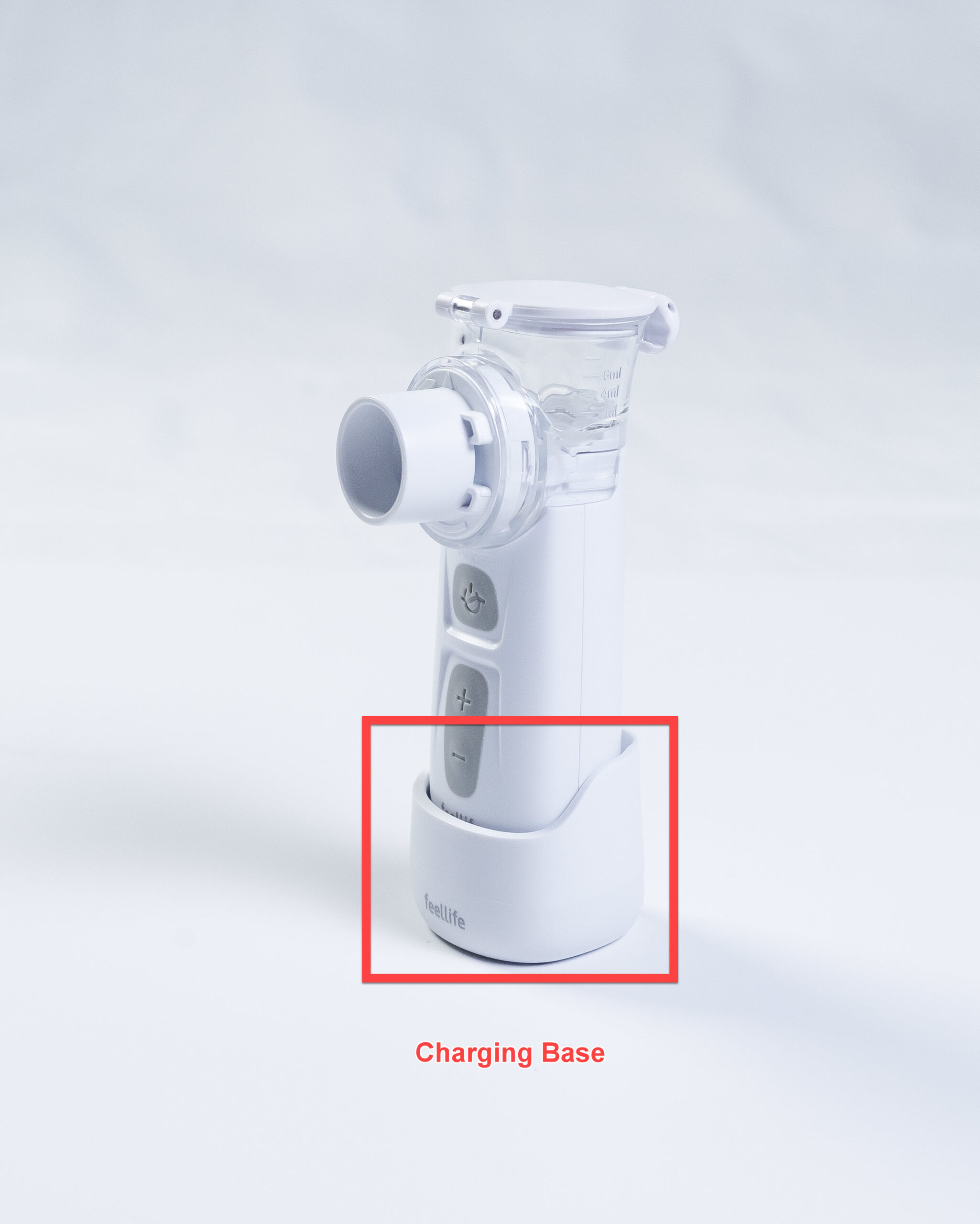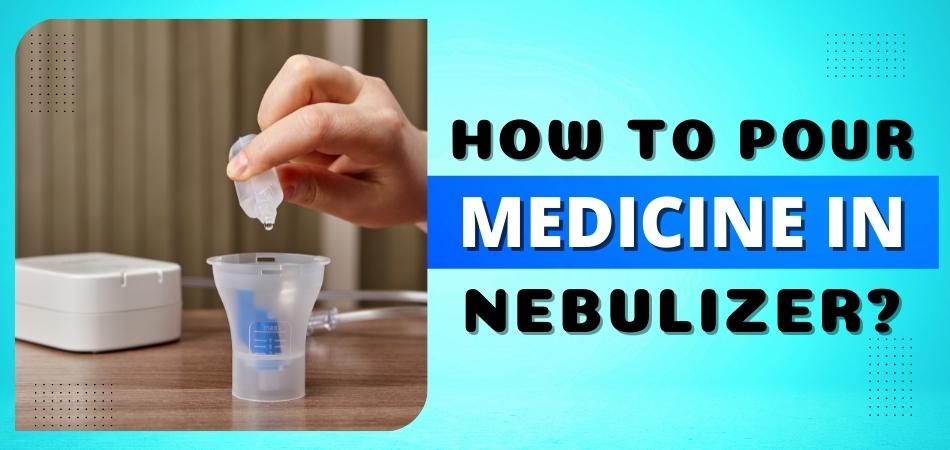During the cold and flu season, many parents turn to nebulizers to help their infants breathe easier. Nebulizers are machines that turn medication into a mist that can be inhaled.
This type of medication is especially helpful for infants because it is delivered directly to the lungs, where it can work quickly to clear congestion and help relieve respiratory symptoms.
In this blog post, we will explore how nebulizers work and provide information on the different types of medications that can be used in them. We will also discuss some tips for using a nebulizer safely and effectively with your infant.
What Is A Nebulizer?
A nebulizer is a medical device that helps deliver medication to the lungs in the form of a fine mist. It is often used to treat asthma, COPD, and other respiratory conditions. Nebulizers are available in both portable and home units.
Nebulizers work by using air compressors to turn liquid medication into a fine mist that can be inhaled. The medication is typically delivered through a face mask or mouthpiece.
Nebulizers are an effective way to deliver medication to the lungs, and they can be used by people of all ages. If you have a respiratory condition, your doctor may prescribe a nebulizer for you.
Portable nebulizers are small, battery-operated devices that can be used anywhere. Home nebulizers are larger and must be plugged into an electrical outlet.
Nebulizers are safe and easy to use. They are typically used for the short-term treatment of respiratory conditions. Talk to your doctor if you think a nebulizer may be right for you.
How Can A Nebulizer Help An Infant During A Cold?
One of the common cold treatments for infants is the use of a nebulizer. A nebulizer is a small, hand-held device that helps to deliver medication in the form of a fine mist that can be inhaled directly into the lungs.

This type of treatment can help to reduce congestion and make it easier for an infant to breathe. There are many different types of nebulizers on the market, but they all work in essentially the same way.
The medication is placed into the nebulizer cup and then a small amount of air is pumped into the device. This causes the medication to turn into a fine mist that can be inhaled through a mouthpiece or mask.
Nebulizers can be used for a variety of different respiratory conditions, including bronchitis, asthma, and even COPD. They are particularly effective at treating infants because they can deliver the medication directly to the lungs where it is needed most.
If you are considering using a nebulizer to treat your infant’s cold, it is important to talk to your child’s doctor first. They will be able to determine whether or not this type of treatment is right for your child and can also provide you with specific instructions on how to use the nebulizer correctly.
When used properly, nebulizers are safe and effective treatments for colds in infants. They can help to reduce congestion and make it easier for your child to breathe.
If you are considering using a nebulizer to treat your infant’s cold, be sure to talk to your child’s doctor first to ensure that it is the right treatment for your child.
Why Is A Nebulizer Often The Preferred Method To Deliver Medication To An Infant?
A nebulizer is often the preferred method to deliver medication to an infant because it is less invasive than other methods, such as injections or inhalers.
Nebulizers also provide more targeted delivery of medication to the lungs, which is important in treating respiratory conditions such as asthma.
Finally, nebulizers are easier to use than other delivery methods, which is important when caring for a young child. You can try the TruNeb™ for your infant. This is a portable mesh nebulizer machine that is very easy to use for your infant.
You can buy it at a very reasonable price and also provide noise-free service for breathing problems.
How To Use A Nebulizer With An Infant?
A nebulizer is often the preferred method to deliver medication to an infant because it is less invasive than other methods, such as injections or inhalers.
It is also easier to control the dosage of medication that is delivered to an infant through a nebulizer.
Additionally, a nebulizer can be used to deliver both fast-acting and long-acting medication to an infant, which is not possible with other methods.
Finally, a nebulizer can be used to deliver medication to an infant who is unable to cooperate with other methods, such as inhalers.
If you are using a nebulizer to deliver medication to an infant, it is important that you follow the instructions that come with the nebulizer.
You will also need to have a few supplies on your hands, such as a mouthpiece or mask, tubing, and medication. It is also important to wash your hands before and after handling the nebulizer or any of its parts.
When you are ready to use the nebulizer, you will need to assemble it according to the instructions. Once it is assembled, you will need to connect the tubing to the nebulizer and the mask or mouthpiece.
You will then need to add the medication to the nebulizer cup according to the manufacturer’s instructions.
Once the medication has been added, you will need to place the mask or mouthpiece over the infant’s nose and mouth. You will then need to turn on the nebulizer and allow it to run for the amount of time specified in the manufacturer’s instructions.
After the nebulizer has finished running, you will need to remove the mask or mouthpiece and disconnect the tubing. You will then need to disassemble the nebulizer according to the instructions.
It is important to clean the nebulizer after each use. You will need to follow the manufacturer’s instructions for cleaning the nebulizer. You should also disinfect the nebulizer according to the manufacturer’s instructions.
What Are The Benefits Of Using A Nebulizer With An Infant?
A nebulizer is a device that delivers liquid medication in the form of a fine mist, which can be inhaled through a mouthpiece or face mask.
This makes it an ideal choice for delivering medication to infants, as they may not be able to hold their breath long enough to receive an inhaler treatment.
There are many benefits of using a nebulizer with an infant.
- First, it is much easier to use than an inhaler.
- Second, it is more effective in delivering the medication to the lungs.
- Third, it minimizes the risk of side effects.
- Finally, it is more comfortable for the infant and can help to reduce anxiety and improve compliance with treatment.
If you are considering using a nebulizer with an infant, be sure to talk to your child’s doctor about the best option for your child.
Are There Any Risks Associated With Using A Nebulizer With An Infant?
Nebulizers are devices that aeros nebulized liquid medication and convert it into a fine mist, which can then be inhaled through a mouthpiece or mask. This process is often used to deliver asthma medication to infants and small children.
While nebulizers are generally considered safe for use with infants, there are some potential risks that parents should be aware of. These risks include:
- Choking and aspiration: If an infant is not properly positioned during a nebulizer treatment, they may choke on the medication or aspirate it into their lungs. This can cause serious respiratory problems and even death.
- Infection: Nebulizers can become contaminated with bacteria, which can then be inhaled by the infant. This can cause serious respiratory infections.
- Allergic reactions: Some infants may have allergic reactions to the medication or other components of the nebulizer treatment. These reactions can range from mild to severe and can potentially be life-threatening.
Parents should talk to their child’s doctor about any potential risks before starting nebulizer treatments.
How Often Should An Infant Use A Nebulizer During A Cold?
The frequency of nebulizer treatments for infants can vary depending on the severity of the cold. For severe colds, some doctors may recommend treatment every four to six hours.
However, for milder colds, treatments may only be necessary a few times a day. It is important to follow your doctor’s recommendations on how often to treat your infant with a nebulizer.
What Are Some Other Tips For Using A Nebulizer With An Infant?
- Use a humidifier in the room to keep the air moist and help the medicine stay airborne longer.
- Sit in a comfortably warm room.
- Remember that it is important to keep your infant calm during treatment, so try to be relaxed yourself.
- Gently hold your infant in your lap or recline them in a semi-upright position.
- Place the mouthpiece of the nebulizer close to your infant’s mouth and nose, and start the machine.
- Encourage your infant to take deep, slow breaths through their nose while the medication is being delivered.
- If your infant is old enough, you can also have them take sips of water between treatments to help prevent their mouth from becoming dry.
- Once the treatment is finished, turn off the machine and remove the mouthpiece.
- Help your infant blow their nose if needed.
- Wash your hands and the nebulizer parts (excluding the medication cup) with soap and water.
- Store the nebulizer parts in a clean, dry place.
Are There Any Other Treatments That Can Help An Infant During A Cold?
There are many ways that parents can help their infant during a cold. Some simple tips include:
- Give your infant lots of fluids, such as water, breast milk, or formula. This will help to prevent dehydration.
- Elevating your infant’s head when they sleep, helps drainage.
- Suctioning your infant’s nose with a bulb syringe.
- Applying a warm, wet washcloth to your infant’s face to help with congestion.
- Give your infant a warm bath.
If you are concerned about your infant’s cold, or if they are having difficulty breathing, please contact your doctor or pediatrician.
When Should You Seek Medical Help For An Infant During Cold?
If your infant has a cold, you should seek medical help if:
- He or she is younger than 3 months old and has a fever
- His or her temperature is higher than 100.4 degrees Fahrenheit
- He or she has a fever that lasts for more than three days
- He or she has difficulty breathing
- He or she has a rash
- He or she is not responding to home treatment after two days
If you are concerned about your infant’s cold, please seek medical help.
Conclusion
Nebulizers are a godsend when it comes to helping infants during the cold season. Not only do they provide much-needed relief for little ones, but they’re also easy to use and come in a variety of fun designs. If you have an infant at home, be sure to keep a nebulizer on hand this winter!



